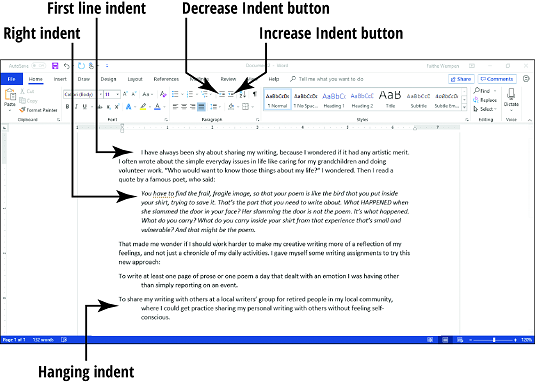

In the Indentation area, set the Left, Right, and/or First indent ( Figure 4.10).įigure 4.15 A tab separates each bullet character or number from the text.Expand the Alignment and Spacing section of the Formatting Palette.To indent paragraphs using the Formatting Palette: Indents the entire paragraph except for the first line. Indents only the first line of the paragraph. Indents the paragraph from the right margin.

Indents the paragraph from the left margin. You can create the following types of indents in Word: You can set paragraph indents using the Formatting Palette, the Paragraph dialog box, or the ruler. To select multiple noncontiguous paragraphs, you can -double click a word in each one. To select multiple contiguous paragraphs, drag through them. You don't have to select the entire paragraph it's sufficient to just click somewhere within it. Selecting a paragraph for formatting is different from selecting a word. Indents can be used to set off quotations from surrounding text (left and right indents), format body paragraphs in a business letter or school report (first line indents), and create bulleted or numbered lists (hanging indents).īefore setting an indent, you must first select the paragraph(s). When you're typing and press to end a paragraph, the next paragraph automatically takes on the alignment of the paragraph you just completed.Īn indent is space between a paragraph and the left or right margin.The spacing between words is automatically adjusted as needed to maintain the flush margins. You'll often see this in newspapers and magazines. Justified paragraphs are aligned flush with both the left and right margins.Right-aligned paragraphs are flush with the right margin and ragged on the left.Center alignment is sometimes used for titles and section heads. Center-aligned paragraphs are horizontally centered between the left and right margins and are ragged on both sides.

Text in a left-aligned paragraph is flush with the left margin and ragged on the right margin.


 0 kommentar(er)
0 kommentar(er)
